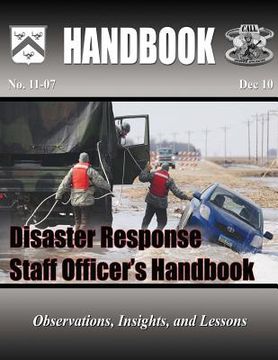Synopsis "Disaster Response Staff Officer's Handbook: Observations, Insights, and Lessons"
Federal forces supported state and local authorities during Hurricane Andrew in 1992, Hurricane Katrina in 2005, and in many other natural disasters in the past decade. Navy divers assisted local, state and federal authorities during the Minnesota bridge collapse of 2007. In 2008, U.S. Army North, U.S. Northern Command's joint force land component command, deployed a two-star task force to command and control federal military forces in support of the Federal Emergency Management Agency and the state of Texas during Hurricane Ike. National Guard units routinely deploy to assist their states with wildland fires, floods, earthquakes, tsunamis, tornados, and oil spills, and to prepare for large scale incidents. Defense support to civil authorities (DSCA) within the United States is not a new mission n for the military. Despite this, Center for Army Lessons Learned collection and analysis teams routinely report that tactical units do not understand the constraints placed upon them by the body of statutes, regulations, and presidential orders pertaining to responding to disasters and incidents at home. This is because the primary mission of tactical units is expeditionary warfare, and that has been their focus for the past eight years in Afghanistan, Iraq, the Horn of Africa, and the Philippines. Military units come to a disaster with a number of strengths: disciplined and trained personnel; a ready fleet of vehicles, surface craft, and aircraft; the capability to operate in austere environments for extended periods of time; a solid logistics tail; reachback capability; long- and short-range communications suites; an in-place command and control system; and a detailed method for planning, executing, and resourcing missions. Add those strengths to an array of specialized units and equipment, and it is easy to see why the Department of Defense can be tasked. This handbook will serve as a planning guide for staff officers in National Guard units that serve as reaction forces and active duty units that are designated as chemical, biological, radiological, nuclear, or high-yield explosive consequence management response forces, or that are simply ordered to assist under very short notice. Included is information for all components and services and some of the agencies and nongovernmental organizations staff officers will encounter.

